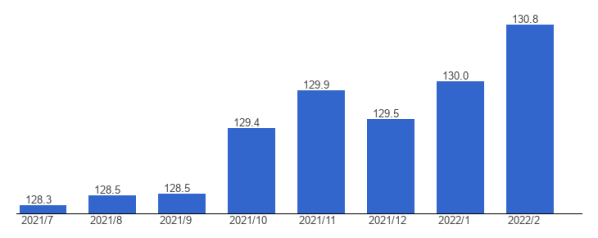
The Chinese Consumer Price Index and Producer Price Index, released by the National Bureau of Statistics of China, are due at 01:30 GMT on Monday.
Meanwhile, the economic toll that coronavirus is having will be a concern in financial markets. Shanghai has been under lockdown since 28 March. The city of 26 million people reported 1,006 confirmed infections and almost 24,000 asymptomatic cases over the previous 24 hours with the 23,107 total reported for China on April 7. Indeed, Omricon will be expected to deal a big blow to China's economy. The most recent hard numbers on Chinas economy refer to January and February which are dated given the war in Ukraine, oil prices surging as well as a new jet of covid-19 cases.
How will AUD react?
The price of AUD that trades as a proxy to Chinese economic events, would come under pressure in light of a worsening outlook for the Chinese economy. The data today, could hurt the Aussie with the risks of stagflation. Inflation in China has failed to pick up this year so far with the continually high PPI and growing raw material prices weighing on firms while the low CPI data reflects the present sluggish domestic demand. AUD/USD is already under pressure on Monday, down 0.2% with 30 minutes to go to the release of the data.
About China CPI
The Consumer Price Index is released by the National Bureau of Statistics of China. It is a measure of retail price variations within a representative basket of goods and services. The result is a comprehensive summary of the results extracted from the urban consumer price index and rural consumer price index. The purchase power of the CNY is dragged down by inflation.
The CPI is a key indicator to measure inflation and changes in purchasing trends. A substantial consumer price index increase would indicate that inflation has become a destabilizing factor in the economy, potentially prompting The Peoples Bank of China to tighten monetary policy and fiscal policy risk. Generally speaking, a high reading is seen as positive (or bullish) for the CNY, while a low reading is seen as negative (or Bearish) for the CNY.

Leave a Reply